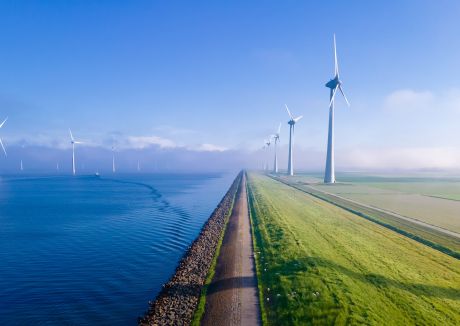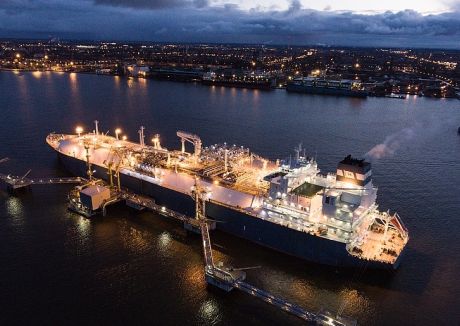An abrupt end to the party
It was all meant to be so different. For a growing section of the LNG industry, the next five years were supposed to be about growth and the bold, strategic shift to becoming LNG traders. Now a growing number of organisations are finding themselves locked into what we are calling the “squeezed middle” of LNG; unable to use the scale and capability of the established players or the nimble approaches to trading and risk management of the trading houses, they are being outcompeted in the market and forced to consider fire sales for their LNG to avoid being left stranded.
Before 2015, the LNG teams within these large (predominately European) utility and gas wholesaler businesses had flown high on the back of strong revenues. This success was based largely on market imbalance as Asia (particularly Japan following the Fukushima tragedy), saw strong LNG demand growth that outstripped contracted volumes. This allowed European LNG buyers to divert their own volumes to hungry buyers at high prices.
In this environment US liquefaction projects came forward, offering these players access to destination flexible LNG on a new low-cost pricing index, without messy and expensive commitments to the upstream. It was seen as an option and flexible compared to existing long-term pipeline and LNG agreements already in place. Most of these organisations were facing competition in their downstream markets so portfolio flexibility and some price diversity was considered advantageous in maintaining competitive advantage at home.
The stage was then set for a new phase of growth, looking outside of home markets and competing with other established suppliers.
In late 2014 the music that the LNG industry had danced to for nearly a decade came to an abrupt halt, cut short by the double whammy of oil prices falling drastically and LNG demand growth in leading markets ticking down. Those left standing should have noticed the music slowing and cannot now blame the dramatic and relatively quick shift to an industry characterised by compressed margins and low prices for their current and projected predicament.
Pressure from the top and the bottom
These players made the transition from buyer to buyer/seller with a fixed mindset: LNG demand would continue to grow and be satisfied by established players through a simple ‘logistics’ approach, based purely on supplying volume and not about the service for the customer.
The LNG industry’s path to liberalisation and fragmentation was accelerated by the arrival of US LNG, creating a number of key themes:
- An abundance of buyers and sellers in the market, increasing competition considerably
- Needs of emerging buyers attracting new entrants and intermediaries with higher risk appetites and more flexible business models – particularly traders
- New services being offered to emerging market buyers, whose contracting requirements are different traditional players
In this new market paradigm, we are seeing two groups of LNG players stealing a lead on the competition. At one end are the leading portfolio players, led by the likes of Total and Shell, who are combining the inherent flexibility in the asset backed portfolios with a nimble and open approach to LNG trading. Increasingly we are seeing these big players popping up in emerging markets, working with buyers to build LNG value chains that can support long-term imports.
Shell’s Maarten Westerlaar is instructive of this strategic direction: “I want to create shorts that we can build projects against… As we develop the market, we’ll need new supply. We will build new LNG projects to serve that market, but as for where, I would be wrong to tell you”.
At the other end are trading houses like Trafigura, Vitol and Gunvor. Active on the fringes of LNG for some time, greater involvement was historically stifled by the difficulty of accessing long-term supply. With LNG’s liberalisation now pushing LNG deeper into the liquid market sweet spot, and a growing number of distressed sellers seeking to offload volumes, traders are growing their businesses, investing in creating structural short positions (medium-term to long-term sales), including opening new higher risk markets. Traders’ ability to employ sophisticated risk management, structuring and optimisation is radically shaking up LNG trading sooner than expected and earning them growing market share.
Sandwiched uncomfortably between them is termed the “squeezed middle” of LNG. Here over-contracted buyers are struggling to find customers as they are unable to stand out in a highly competitive market, unless they enact considerable strategic change. Those without the balance sheet strength needed to weather these challenges are now finding themselves in significant difficulty.
Responding to this challenge
Developments within LNG show different strategic responses of incumbents to the maturing of the industry. These responses are not mutually exclusive and in fact are being realised as hybrids, depending on specific needs/capabilities, could be necessary.
Sustain: Reconsidering position and seeking ways to add capability/scale that will help create value in this new challenging LNG market, examples of this include:
- Japanese buyer alliances (“Realize a new business model which balances both “Origination” and “Optimization” in the energy chain” – JERA Corporate Vision)
- Shell’s acquisition of BG – where an integrated LNG player bought portfolio flexibility and trading ability
- Qatari merger of RasGas and QatarGas in 2017
- The recent GAIL timeswaps with Vitol to ease pressure on physical business by deferring volume commitments
Extend: LNG players that are used to supplying their home markets or other established ones, are now pursuing opportunities in emerging markets, which come with a different risk profile.
These opportunities are diverse in nature, including cargo tenders for varying lengths or the development of downstream projects that can include regas and LNG fuelled power plants, with Shell’s desire to build “structural shorts” being a good example of this.
Re-position: For some players, there are more incremental strategic shifts that can effectively re-position them in the market and use existing positions to create value – e.g. Iberdrola’s greater emphasis on more active trading of its portfolio that can use its regas position in Spain as a back-stop to offer buyers flexibility. Strategic partnerships are also being used to re-position, often with the use of companies with complementary strengths: KOGAS with EDF Trading and Angola LNG’s recent deals to market volume through Vitol and RWE Supply and Trading
In reality, success in these moves is so far proving quite elusive for many major industry incumbents. For those most at risk of becoming the “squeezed middle” the challenge is likely to be even greater; needing to address repositioning from a platform of more limited underlying capabilities, a challenge to justify LNG’s reduced value-add to corporate programmes, and a questioning of the role of LNG within substantial change in corporate strategies. If an established player like Engie is rumoured to be planning the sale of its LNG business, it should not be discounted that other organisations could follow suit, leading to a significant re-organisation of the LNG landscape.
If you would like more information about how Gas Strategies can help your business with Consulting services across the value chain or provide industry insight with regular news, features and analysis through Information Services or help with people development through Training services, please contact us directly.









